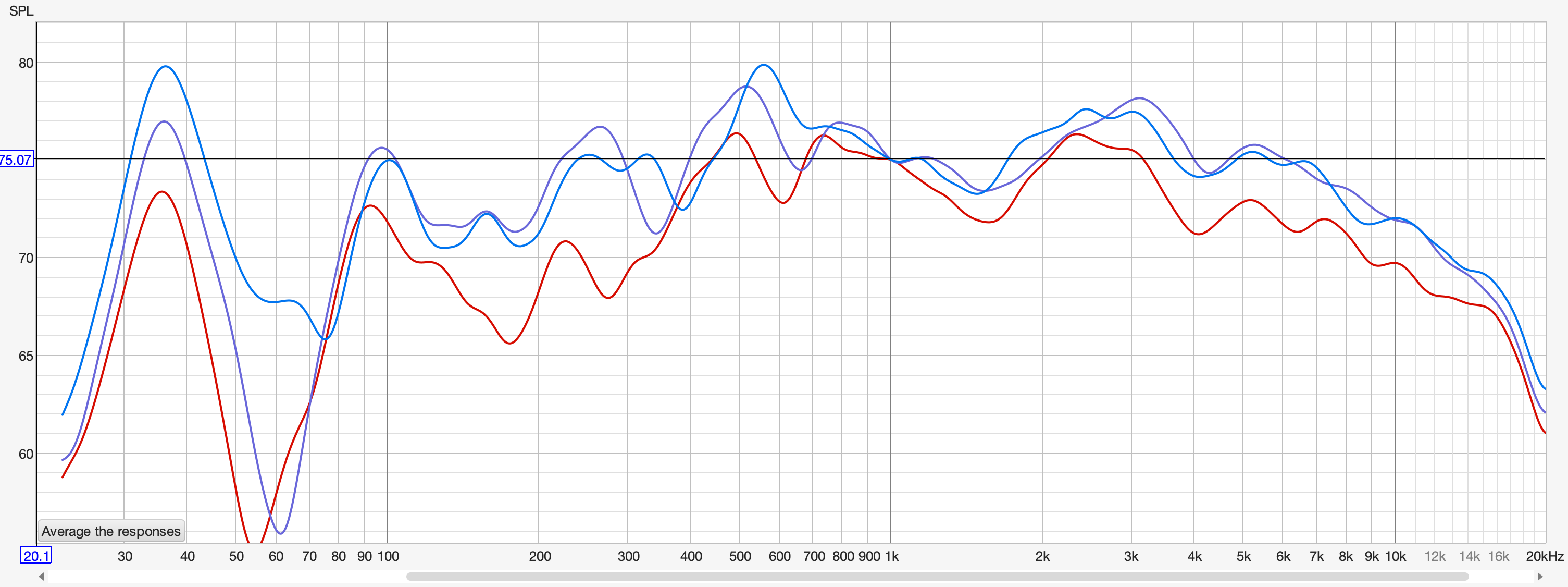Update to the thread. Here are 3 FR curves for my new-to-me Fritz LS7 Illuminator bookshelf speakers:

The difference in the curves are 3 different listening positions:
Red: 60" from back wall
Purple: 48" from back wall
Blue: 36" from back wall
The 35Hz peak isn't nearly as high as with the previous speakers (Monitor Audio Gold Reference 20) perhaps because the LS7's put out less quantities of bass vs the floor standing Monitors, but that 40-80Hz null is very much there and even in the "best" case at 36", it's down about 10dB from reference level. There's another dip around 100-250Hz or so.
As mentioned earlier, I'm very open to getting two audio-focused subs like the SVS SB-1000 Pro to fill in the nulls in the bass region if that will even out the bass response.
About the super chunk bass traps for the back wall - I measured and actually only have 12" between the top of the cabinets and the ceiling - not sure if a scaled down version of that makes sense there or is necessary with the new FR curves. I have about the same amount of room where the back wall meet the side walls, again constrained by the back cabinets.
Right now, I'm using big 26" high speakers as speaker stands, but will be getting 24" high real speaker stands tomorrow. I haven't tried to play with speaker location, they're still located 38" from the front wall and 28" from the side walls (at the 1/5 room width and depth location). Played with toe-in just a bit, but not a huge impact from what I could tell.
The ETC impulse peaks smoothed to 0.2ms show just one peak between 3-4ms around -14db or so, but all other peaks below -17dB.
Any thoughts are welcome as always.
As far as subjective listening impressions: They sound more forward in the upper mids/highs than the Monitors. At high volume, I want to tame them some. This is with grills off. With grills on, it seems to incrementally calm those forward frequencies some, but visually, I like the look without the grills much more, so will try to make adjustments as possible with grills off.


